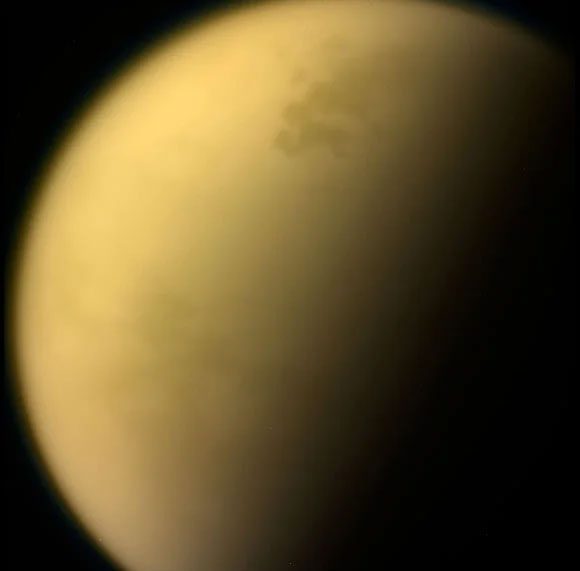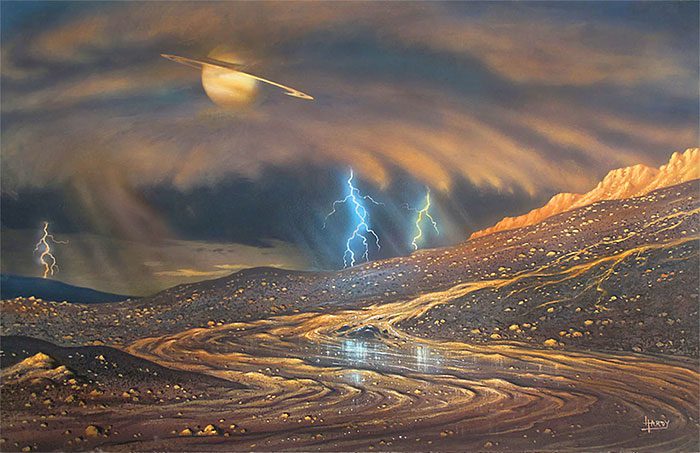New Discovery Could Explain the Origins of Life on Earth.
According to Sci-News, a new study led by Dr. Rafael Silva from the Lisbon Astronomical Observatory and the University of Lisbon (Portugal) has identified traces of tricarbon (C3) in the atmosphere of “the moon of life” Titan.
Titan is Saturn’s largest moon, where observations from NASA’s Cassini spacecraft have revealed numerous Earth-like features as well as the potential for living organisms.

Saturn’s moon Titan – (Photo: NASA).
Despite being just a satellite, Titan is larger than the planet Mercury. Among the moons in the Solar System, its size only ranks behind Jupiter’s Ganymede.
In addition to its Earth-like landscapes with rivers, lakes, seas, and mountains… it also boasts a significantly thick atmosphere.
This world’s atmosphere is similar to Earth’s as it acts as a “planetary chemical reactor,” capable of producing complex carbon-based molecules. Carbon is the “backbone” element of life.
The new discovery is based on the study of methane (CH4), which does not last long enough under the conditions of either Earth or Titan, but is also one of the potential “biosignatures” in planetary science.
Methane needs to be produced by various processes, from natural reactions to being released by living organisms.
For methane to be abundant on Titan as observed, it must be replenished through geological processes.
Using the Very Large Telescope at the European Southern Observatory (ESO), the research team identified 97 absorption lines of methane gas as well as one absorption line of tricarbon in the spectrum of this moon.
This was a surprise, as tricarbon was previously only known to exist in the material surrounding comets.

Primordial Titan Landscape – (Graphic: SCI-NEWS).
“The more we learn about the different molecules involved in the chemical complexity of Titan’s atmosphere, the better we will understand the type of chemical evolution that may have allowed or been related to the origin of life on Earth,” the authors wrote in the journal Planetary and Space Science.
Some organic materials that contributed to the early formation of life on Earth are also believed to have originated in the Earth’s atmosphere.


















































